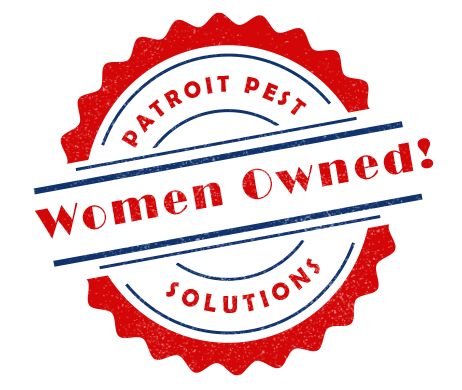Spotted Lanternfly Pest Control
The Spotted Lanternfly is an invasive plant hopper which has been discovered in Amity, Berks, Bucks, Chester, Douglass, and Montgomery county. This invasive pest is native to Southeast Asia and was imported to Pennsylvania. They are spreading rapidly and present a serious threat to gardens, orchards, and woodlands. Early detection of this invasive pest is the key to protecting crops such as grapes, apples, stone fruits and hardwoods.
Spotted Lanternfly Life Cycle
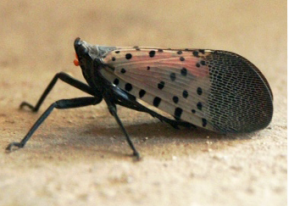 Adult Spotted Lanternflies are approximately 1” long and 1/2” wide. The forewing is gray with black spots and the wing tips are striped in black and gray. The hind wings have contrasting patches of red and black with a white band. While it has two pairs of wings, the lanternfly is a strong jumper and hops more than it flies. The legs and head are black; the abdomen is yellow with broad black bands. Immature stages are black with white spots, and develop red patches as they grow. In the spring, egg masses hatch into tiny, 1/8″ black and white nymphs which are incapable of flight. As the spring progresses, the nymphs pass through four stages, growing with each molt. The first three stages are black with white spots, the fourth stage is orange with black and white spots. Adults begin appearing in early summer.
Adult Spotted Lanternflies are approximately 1” long and 1/2” wide. The forewing is gray with black spots and the wing tips are striped in black and gray. The hind wings have contrasting patches of red and black with a white band. While it has two pairs of wings, the lanternfly is a strong jumper and hops more than it flies. The legs and head are black; the abdomen is yellow with broad black bands. Immature stages are black with white spots, and develop red patches as they grow. In the spring, egg masses hatch into tiny, 1/8″ black and white nymphs which are incapable of flight. As the spring progresses, the nymphs pass through four stages, growing with each molt. The first three stages are black with white spots, the fourth stage is orange with black and white spots. Adults begin appearing in early summer. 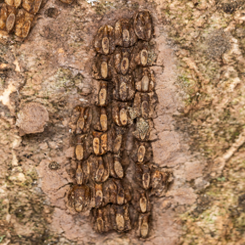
Egg masses
are attached to trees, walls and other surfaces.
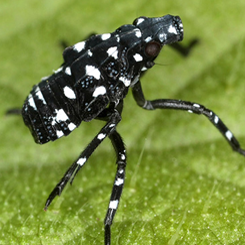
Young nymphs
start dark in color and feed on soft plant tissue.
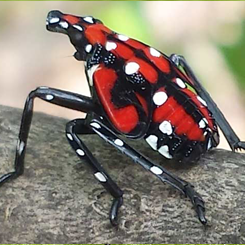
Mature nymphs
turn red after molting while continuing to feed.
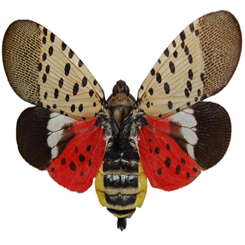
Winged adults fly
from tree to tree to feed, breed and lay eggs.
Whole-Plant & Tree Solutions
We will conduct a free inspection of your property looking for spotted lanternfly activity. We use systemic insecticides to prevent these pests from infesting and feeding on trees. Our treatment uses two products; Imidacloprid and Dinotefuran which are applied to the roots of the plant and are absorbed into the tree itself. This treatment, in conjunction with specific synergizing agents add to the effectiveness of the treatment, ensuring the Lanternflies are exterminated as they attempt to feed anywhere on the tree.
Systemic Treatment
- Systemic treatment lasts for 3 months
- Treatment absorbs into plant, will not wash off
- Highly effective against Lanternflies on first application
Monthly Treatment
- Monthly treatment lasts for 1 month
- Treatment can wash off in wet weather
- Reduced effectiveness, requires continual treatment
Symptoms of Infested Plants
Nymphs first feed on small plants and vines in the spring using their piercing mouthparts to suck the sap out of stems, leaves, and even the trunks. After maturing into adults, Spotted Lanternflies begin feeding on trees. Infested trees develop weeping wounds which leave grayish or black trails along the trunk. As they feed, a sticky substance called honeydew is excreted.The sap then attracts mold and other insects to feed, notably ants, bees and wasps. In fall, adults lay egg masses on host trees and nearby smooth surfaces like outdoor furniture, stone, structures and vehicles. Newly laid egg masses have a gray mud-like covering which can take on a dry cracked appearance over time. Old egg masses appear as rows of 30-50 brownish seed-like deposits in 4-7 columns on the trunk, roughly an inch long.
Trees At Risk Of Lanternfly Damage
- Almonds
- Apples
- Apricots
- Cherries
- Grapes
- Maple Trees
- Nectarines
- Oak Trees
- Peaches
- Pine Trees
- Plums
- Poplar Trees
- Sycamore Trees
- Walnut Trees
- Willow Trees
Why Do People Trust Patriot Pest Solutions To Remove Spotted Lanternflies?
Patriot Pest Solutions offers over 50 years experience in solving pest problems. We’re family owned and locally operated. We are the local Spotted Lanternfly experts and are routinely recommended by local townships as the Spotted Lanternfly pest control authority. All of our certified, state-licensed technicians are fully insured and ready to eliminate your Spotted Lanternfly problem. Our treatment methodology was devised by our own in-house Associate Certified Entomologist, one of twelve in the entire state of Pennsylvania.
Pest Control Reviews
“We needed help with spotted lantern flies. Chad is the best! Very knowledgeable and efficient! Patriot’s fee was very reasonable. Service was prompt. Will use again!”
“Justin M. has been with our community at Amity Garden Apartments over the past year. He has always been on time, courteous to the staff and most importantly our residents. All of the services that we request are met or exceeded by Justin and Kim at Patriot. Nothing seems out of reach for their crew! Thank you for taking care of our community.”
“We just had PPS out here last week because we’ve had TONS of ants over the last few weeks and since they left I have not seen one ant! AMAZING!! When Chad came out he was on time, friendly, and seemed very knowledgeable. Most importantly he was thorough! We’ve had other companies come out and it seems like they’re there for 15 minutes and then leave. Chad really took his time explaining what (and why) he was doing certain things and I appreciated that. I highly recommend PPS!”
Satisfaction Guarantee
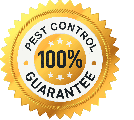 With over 50 years of experience, you can rest assure that Patriot Pest Solutions can eradicate any pest problem you may have in your residence or commercial property. Our family-owned business offers the best wildlife and pest preventative and removal solutions. We pride ourselves on being a results oriented business offering 100% pest control guarantee.
With over 50 years of experience, you can rest assure that Patriot Pest Solutions can eradicate any pest problem you may have in your residence or commercial property. Our family-owned business offers the best wildlife and pest preventative and removal solutions. We pride ourselves on being a results oriented business offering 100% pest control guarantee. 


